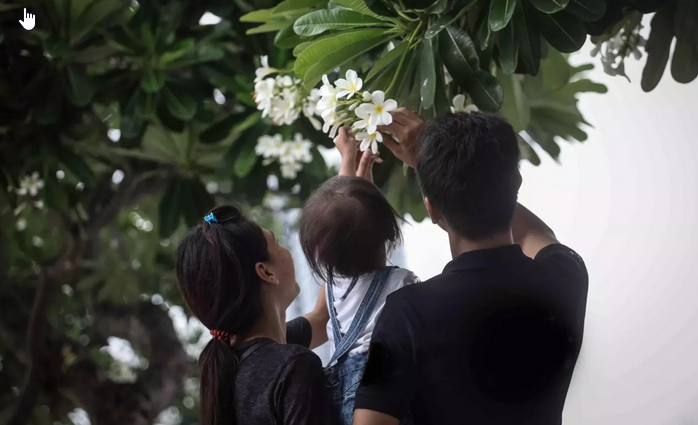Stigma can be so insidious. It cuts deep and affects all of us," said Shaun Mellors, Director, Community Stakeholder Engagement, ViiV Healthcare who was speaking on Zero HIV Stigma Day during the opening plenary of LIVING2024. “Every day should be Zero HIV Stigma day,” rightly said Shaun.
Shaun celebrated the inspiring legacy of Prudence Nobantu Mabele who was a force for change for a socially just world, and a noted South African activist. Shaun said that lessons from Prudence’s legacy are to “speak your truth”, “be brave”, “sing, even if you are a terrible singer, sing”, and "laugh and make others laugh.”
All forms of HIV-related stigma and discrimination must end so that all people can access full spectrum of health and social services in a rights-based, people-centred and gender transformative manner.
People living with HIV who anticipate stigma are 2.4 times more likely to delay care until very ill.
Stigma – from the inside out?
“It is important to tackle stigma and discrimination at all levels of the socio-ecological level - individual, family and peers, community and structural level, to affect sustainable and transformative change. We need evidence-based multi-level interventions (to tackle all forms of stigma and discrimination – including internal stigma) for lasting change,” said Nadine Ferris France, CEO of Beyond Stigma and Certified Facilitator of Inquiry-based Stress Reduction (IBSR).
Internal stigma is a mindset of negative beliefs, thoughts, and behaviours about HIV, which manifests as shame, guilt, feelings of contamination, reduced self-efficacy, self-loathing, low self-esteem and self-rejection. “Internal stigma happens when we internalise external stigma and judgements and believe that they are true. Internal stigma also happens in the absence of external stigma and discrimination”, explained Nadine.
“84.5% of people living with HIV report internalised stigma or internal stigma or shame, according to the People Living with HIV (PLHIV) Stigma Index (December 2023)”, she added. The PLHIV Stigma Index is supported by the Global Fund to fight AIDS, TB and Malaria (The Global Fund) and US President’s Emergency Plan for AIDS Relief (PEPFAR) and the Global Partnership to Eliminate all Forms of HIV-Stigma and Discrimination. The PLHIV Stigma Index indicates that addressing internalised stigma is crucial for implementing community-led initiatives, improving treatment adherence, and accessing prevention services in focus countries.
Internal stigma results in a host of negative impacts on HIV programme outcomes, shares Nadine. For example, people tend not to seek care, treatment adherence goes down, depression increases, fears of disclosure increases, quality of life and self-esteem dips, self-efficacy is reduced, and people likely to feel more isolation, anger or resentment.
Through evidence-based interventions such as as the Wakakosha: I am Worth It peer-led intervention to support young people living with HIV improve wellbeing and improve self-worth, Wakakosha is layered within the existing Zvandiri CATS model and uses a cognitive-awareness approach called Inquiry-based stress reduction together with creativity such as music, poetry, writing and drawing. Currently being implemented in Zimbabwe and starting now in Rwanda, Ghana and elsewhere, results are promising.
“Addressing internal stigma helps improve treatment adherence; boosts self-confidence, self-agency, and sense of purpose/ meaning; reduces fears around disclosure, and body positivity; increases communication and personal/family relationships and forgiveness,” said Nicola Willis, Executive Director of Zvandiri.
“For us to conquer stigma in the community, we have to first tackle internal stigma. When you know who you are, and know your worth, you can stand up to the community. When you have accepted yourself and seen yourself worthy, you can go and impact that to the community” said Vimbinashe Jazi, Zvandiri CATS and a Wakakosha Programme Coach at 25th International AIDS Conference (AIDS 2024).
Journey from internal stigma to self-love and self-worth
Targets of 10-10-10 refers to the promise that by 2025 less than 10% of countries should have punitive legal and policy environments that deny or limit access to services, less than 10% of people living with HIV and key populations will experience stigma and discrimination, and less than 10% of women, girls, people living with HIV, and key populations will experience gender inequality and violence.
The Global Partnership to Eliminate All Forms of HIV-related Stigma and Discrimination has identified six settings where stigma and discrimination are still posing significant barriers to HIV. “Addressing stigma and discrimination is central to the Global AIDS Strategy and its 10-10-10 targets on societal enablers,” said Simone Salome, Human Rights Advisor for UNAIDS and Global Partnership Lead.
The Global Partnership has prioritised and is supporting efforts to reduce internal stigma over the next few years.
“It is time to see beyond stigma, to see what is possible in a world of self-love, self-worth – let’s stop using deficit-based language and reframe our efforts” said Nadine.

 It is time to see beyond stigma, to see what is possible in a world of self-love, self-worth – let’s stop using deficit-based language and reframe our efforts
It is time to see beyond stigma, to see what is possible in a world of self-love, self-worth – let’s stop using deficit-based language and reframe our efforts










.jpeg)


.jpeg)
.jpeg)
.jpeg)
_(1).jpeg)

_(1)_(1)_(1).jpeg)
.jpeg)
.jpeg)
.jpeg)








.jpeg)
.jpeg)